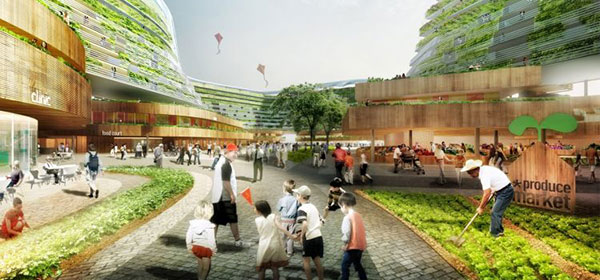A Singapore-based architect says Australia should explore high-density housing to accommodate its rapidly rising ageing population.
Addressing the country’s architecture industry at Design Speaks: Housing Futures last week, Stephen Pimbley highlighted Australia’s need to change attitudes around retirement housing models, particularly to ensure that retirees remain connected to the community and amenities.
The Sparks Architects director discussed his vision for ‘Home Farm’, a high-rise retirement village in the centre of Singapore, which will have its own self-sustaining fruit and vegetable farm growing vertically on the outside of the buildings. The concept is focused on keeping retirees within urban centres, rather than forcing them out to low-amenity fringe areas, and providing facilities specific to their needs.
“Home Farm is about changing the perception of aged-care living and not making it folksy and remote from the rest of the community,” Mr Pimbley says. “It doesn’t matter whether you’re in Asia or in the UK, you’re usually faced with horrible institutionalisation for older people and they’re segregated away from the community they used to live in.
“Home Farm is about providing certain things [for] people in their retirement to make them feel a lot more secure and make them alert and try to combat things like Alzheimer’s.”
While Mr Pimbley’s plan is expected to get the green light in Singapore, the idea of high-rise apartment living may be a little tougher for Australians to swallow.
Research shows that we still favour the suburban house model, with older Australians statistically reluctant to adopt apartment living. The 2011 Census found that 94 per cent of Australians aged 65 and over still lived in private suburban dwellings.
However, with the strain of urban sprawl, population expansion and reduced housing affordability, developments must cater for this changing landscape.
Development advocacy group The Urban Taskforce says Government policy reforms and more ‘senior-friendly’ housing options could help to streamline the downsizing process for retirees.
“It is clear that there is a gulf between what many seniors want and what is available in the present marketplace,” says Urban Taskforce CEO Chris Johnson. “This dearth of appealing housing stock seems to stem, in some cases, from a lack of innovation and flexibility in terms of development, planning and design.
“State and local government[s] could do more to promote senior-friendly housing products in planning and ageing strategies by encouraging more areas of higher density and age-friendly accommodation around transport hubs and town centres.”
What do you think? Would you live in a high-rise development with amenities suited for retirement needs, or do you prefer the traditional suburban home? Does this idea sound like a viable solution in Australia?

